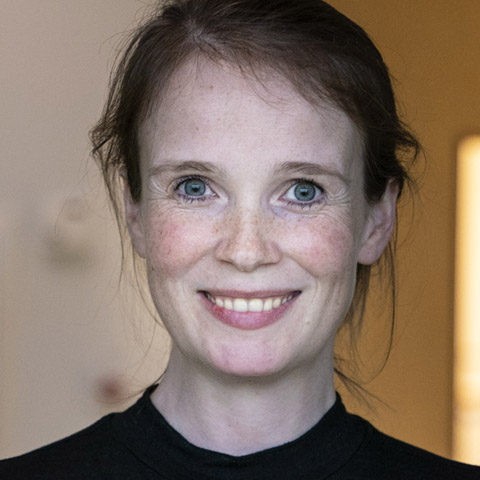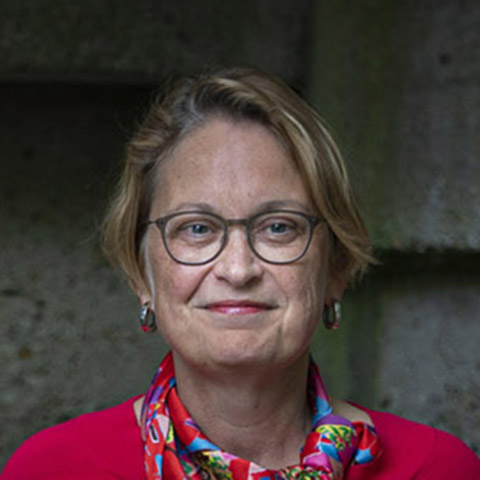
Women in science
If they could do it,
you can too
The veteran scientist
the talented newcomer

Marthe Walvoort
‘I still see career day posters with only men on them’
Maybe she was just lucky, she says, but as a chemistry researcher Marthe Walvoort has always gotten all the support she needed from men. ‘I’ve never had to deal with men who were trying to keep me in my place’, she says. ‘I only came across male supervisors who pushed me forward.’
Walvoort’s career is going swimmingly. She was able to do a research internship in Oxford during her master, after which she received her PhD in Leiden on the chemistry of sugars cum laude. She landed a postdoc position at MIT and eventually came to Groningen as a Rosalind Franklin Fellow to set up her own lab at the Stratingh Institute. There, she studies complex sugars, like the ones in mother’s milk.
Not strategic
For a long time, colleagues kept telling her that molecules were best made using chemistry. Biological reactions were simply not thought of in her line of work. But as a postdoc, she became fascinated by the biological ways of making sugars. ‘It’s not necessarily strategic’, she admits. ‘Because in terms of publications, everything is slower and that gives you a lot of headaches if you want to pursue an academic career.’
Walvoort did feel it was ‘scientifically correct’ to take the path she is on now. ‘I never had a clear picture in my mind of where I wanted to be’, she says. ‘I just loved the science and was going for scientific challenges. But it clearly wasn’t the easiest way to do it.’
Pioneer
Opting for a big family didn’t make it any easier. She is a mother of three, with a fourth on the way. ‘When I had my first, I was doing research at MIT and there weren’t many women who had a baby. At some point you just realise there will never be a best time. But still, I felt like a pioneer.’
‘It was just like in science’, she says. ‘You just find the thing you are most fascinated with and you go for it. My husband and I really wanted to have kids and I think we are great parents. We love them so much that we can’t have enough of them.’
Difficulties
Despite all the support and success she’s personally had, Walvoort says, there are still real difficulties for women in science to overcome. ‘I still see career day posters with only men on them. I see lists of education directors of our faculties and they are almost all men. I see a conference list where all keynote speakers are men, when I know that most of the PhD students are female.’
The people in the committees and on the boards, those who organise conferences, they should go the extra mile to find women, she says. Women are still underrepresented in academia and that does real damage to young female scientists. ‘They are in the middle of their PhD and are thinking of their future. Seeing others like themselves, it matters! The picture of science we paint early on will stay with them.’
Maternity leave
She also feels that the many hurdles that a starting researcher has to overcome before getting anywhere in science, can hold women back more than men. ‘Take extensions’, she says. ‘They’re not the solution for real equality. You go on maternity leave and you go for an extension for your evaluation, for example, because you don’t meet the criteria for your next step yet.’
But it’s these criteria that keep women down, she feels, because they more often experience ‘life events’ like having children or caring for sick family members. ‘I’d love to switch this around and say: if you don’t know after five years what kind of people you’re hiring, something is wrong. So, five years or five years and five months, it shouldn’t matter as much.’
Walvoort herself is also trying to help women along a little. She might be a little biased, she admits, but she just might look a little harder to find a spot for a female applicant in her lab. ‘I realise how important the experience is for young women.’
She hopes she can help women stick with science. ‘If your internal compass points to science, then go for it and don’t let yourself be distracted. For every experiment that goes right, nine will go wrong. So you need to keep pushing.’
Sluiten ×

Cisca Wijmenga
‘Female role models are important’
When Cisca Wijmenga started her research career in 1989, only 15 percent of PhD candidates at the University of Groningen were women. Still, it never occurred to her that she was doing anything remarkable. ‘I think it might be my background that caused me to never think in the boxes “male” and “female”’, she says.
Wijmenga grew up in a hard-working family. Her grandmother owned a shop. Her father had his own company and her mother worked there full time. ‘The women around me always worked. I learned that it was important to have a job and to make your own money’, she explains. ‘I guess that has helped me throughout my career. I was independent and doing what I wanted to do, not afraid to take the opportunities that presented themselves to me.’
Success didn’t come easily, though. She worked her way up from lower secondary education to a university of applied sciences degree and became a laboratory technician, but she didn’t feel like she really belonged there. She wanted more, kept asking questions. She went to university to study biology, did a PhD that she finished cum laude, and embarked on a career in the United States. She was appointed professor of genetics at the UG in 2007 and won the Spinoza Prize in 2015.
Visible
She has never felt awkward or different as a woman, she says. ‘I was just doing what I loved to do. And sometimes my gender worked to my advantage.’ Like when she was in meetings where she was the only woman. ‘In a way, that makes you more special’, she says. ‘I, for example, often wear colourful clothing. When I was in a room with men who only wore black and blue, it did make me more visible.’
Still, only 27 percent of professors are currently female. Wijmenga realises that’s not nearly enough, but she also wants to be realistic. ‘The pool of women you start with is small. You can’t expect that 15 percent we had back in 1989, to suddenly turn into 50 percent of female professors now.’
The number of female students has drastically increased though, as has the number of female PhD candidates. ‘So, at the moment, we have a more equal distribution at the bottom. Some people might say that if we wait long enough, we can make up for it.’
Differences
But Wijmenga doesn’t think that is true. She talks about her experience in a committee many years ago, which consisted mainly of men. ‘We’d be discussing a grant and they would say they didn’t want to give a grant to a woman in case she got pregnant and couldn’t do the job anymore. We can’t tolerate that kind of thinking. If there are women in these meetings, we can prevent this.’
There are, of course, real biological differences between men and women. ‘They have different hormones. They look different. Women sometimes are more likely to wonder if they’re good enough. They might need a bit more support to help them get to the next step. That is something we cannot ignore. It is something we should realise. If we don’t, we are losing a lot of potential.’
The UG upped its game after Wijmenga was appointed rector magnificus in 2019. Originally, the university aimed to have 30 percent of professors be female by 2025, but its goal is now 33 percent. To get there, fifteen extra Aletta Jacobs chairs were created last year.
Female leadership
‘In any situation it is important to have diverse teams’, she says. ‘With different ethnicities, ages and sexes. The feminine leadership is different from the male leadership. That doesn’t mean that you can’t find both in both genders. Having a mix helps.’
Special programmes to promote women are a good thing, she says. They are necessary to close the gap that still exists. ‘Female role models are important. Particularly if you grow up in an environment where it isn’t normal to have working women.’
What advice would she give to girls in science now? ‘I now see that my entire career is based on opportunities I got and me daring to take them. Even in situations where I wasn’t entirely sure what I was getting myself into. I often jumped in feet first, hoping it would all work out. Whatever I did afterwards, I could always look back. If I could do it then, why shouldn’t I be able to do it now?’
Sluiten ×